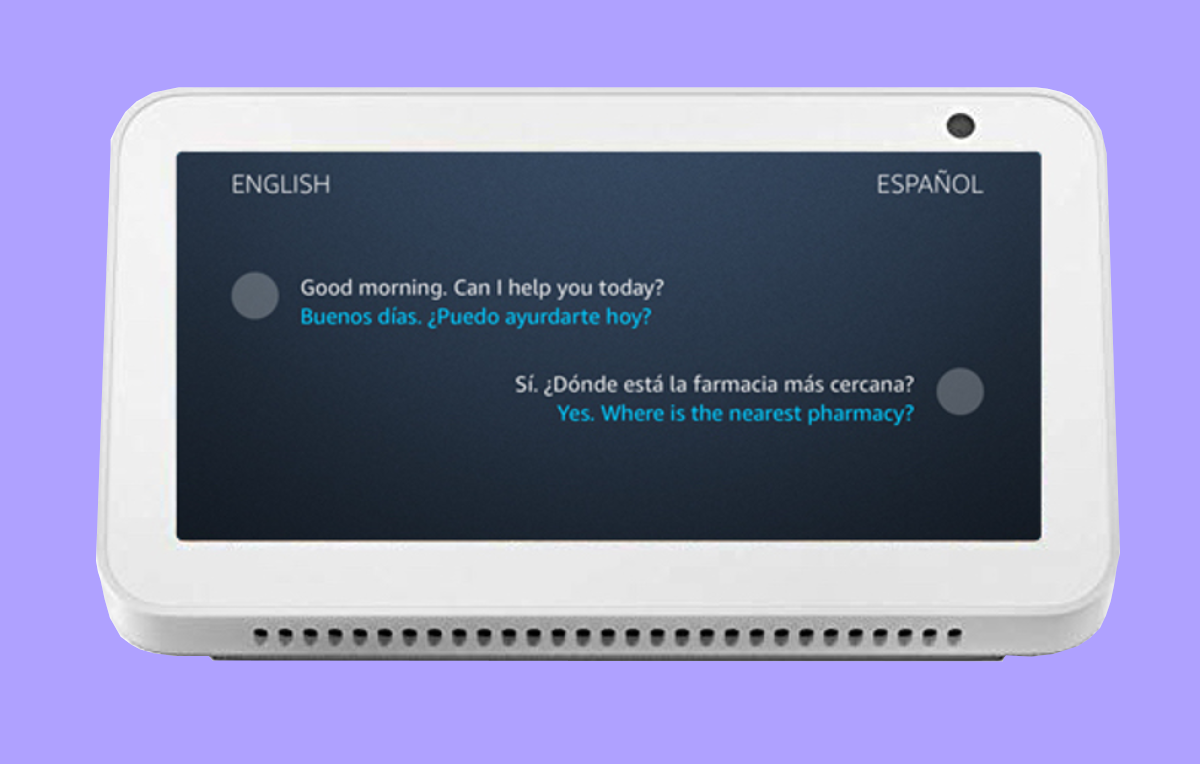Amazon Alexa upgrade brings Live Translation to Echo devices — here’s how to use it
Amazon’s Live Translation is an Alexa-powered Google Translate alternative

Amazon Alexa has just gained the ability to translate a suite of languages on-the-fly, bringing a smart upgrade to Amazon Echo devices.
The Live Translation update is currently being rolled out now on U.S. Echo devices, and can translate between English and Spanish, German, French, Hindi, Italian and Brazilian Portuguese. Translated phrases can be played back as speech or, on Echo Show devices, displayed on-screen as text.
- The best Alexa speakers you can buy
- Already got a smart speaker? These are the best Alexa skills for it
- Plus: iPhone apps must now show privacy data — what it means for you
Like Google Assistant’s Translate-powered interpreter feature, Amazon’s Live Translation works by recording speech, quickly translating it and playing the phrase back via a voice assistant – Alexa, in this case.
Using Live Translation is as simple as barking a voice command at Alexa, such as: “Alexa, translate French." Alexa will then play a beep and you can then start speaking in one of the supported languages.
From there, Alexa will translate what your saying into the desired language, as well as serve up a live transcript of your conversation on Echo devices with displays.
This is likely to be a useful feature if you want to talk to house guests who don't speak your native language very well. Or you simply want to better learn another language.
Although Google’s interpreter mode can live-transcribe a far greater variety of languages, there are some distinctions here that might give Alexa's new translation features the edge.
Sign up to get the BEST of Tom's Guide direct to your inbox.
Get instant access to breaking news, the hottest reviews, great deals and helpful tips.
For one thing, Amazon’s Live Transcribe is designed with two-way conversations in mind, and as such is capable of translating both sides at once. Google’s interpreter mode service caters more towards translating a single speaker, so might not be as useful when attempting to converse.
Amazon does this by running two instances of its automatic-speech-recognition system at once; one for each speaker. According to Amazon’s blog, this also reduces the latency of delivering the translation as it doesn’t need to manually restart its speech recognition model whenever the speaker changes.
In short, this is yet another feature to build out Amazon Alexa and Echo devices from simple smart home gadgets to answer queries, control lights, and play music, into truly capable virtual assistants.
James is currently Hardware Editor at Rock Paper Shotgun, but before that was Audio Editor at Tom’s Guide, where he covered headphones, speakers, soundbars and anything else that intentionally makes noise. A PC enthusiast, he also wrote computing and gaming news for TG, usually relating to how hard it is to find graphics card stock.

